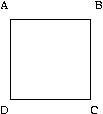Schools Mathematics Grand Challenge
The theme for this week's problems is travel. Each problem
is like a tricky set of directions that you have to follow.
However, if you carefully follow the directions step-by-step,
you should be able to find your way to the answer.
PROBLEM 19:
A large convoy of mini-buses travelled from Limerick to Croke Park for
the rugby match last weekend. When starting out from Limerick, all of the
coaches carried exactly the same number of passengers. However, on the
way to Dublin, 10 coaches broke down, and in order to accomodate all of
the passengers from these 10 coaches, each of the remaining coaches took
exactly one extra passenger. After the match, before returning back to
Limerick, the organisers found that a further 15 coaches had broken down.
However, everyone was once again accommodated, and, on the way back to
Limerick, each mini-bus had exactly three more passengers than it had
when leaving Limerick in the morning.
How many people travelled to the match on the minibuses?
PROBLEM 20:
One Friday evening, Mary walked from her house to Sheila's house at a
constant speed, arrived at Sheila's house at 8 pm, and then they both
immediately walked the same route back to Mary's house. Next Friday,
Sheila was ready earlier than usual and started to walk along the route
towards Mary's house at some time before 8 pm. She met Mary coming
towards her along the route, at which point, Mary turned around and
walked back to her house with Sheila. On this occasion they reached
Mary's house exactly 16 minutes earlier than on the previous Friday.
If the two friends walked at the same constant speed on both Fridays,
and Mary left her house at the same time both days, how many minutes
before 8 do they met the second day?
PROBLEM 21:
One Sunday afternoon, John walked around the square path shown below.

When asked how long it took him to complete the circuit, he could not
remember. However, he did record the following odd information about
the timing of different parts of the walk.
- He walked at a constant speed along each side of the square;
- His speed was different along each side of the square (so his constant
speed from A to B was different to the constant speed from B to C and
so on);
- The first two thirds of the walk (in distance) took him exactly 10
minutes longer than the final two thirds of the walk;
- The side from C to D took longer than the side from A to B, and the
time taken to go from B to C was longer than the time taken from D to
A by exactly the same amount.
How much longer did the side from A to B take than the side from D to A?
|
 |
Links
Home
About
News
This Week's Puzzles
Previous Puzzles
Solutions to old Puzzles
Get a User Code
Get your final score
Submit Your Answers
Tip of the Week
Did You Know ?
Competition Rules
|